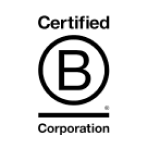Clarifying Board Authority in a New Era of Corporate Governance
In an era where governance scrutiny is intensifying, the role of the Company Secretary has evolved from technical compliance to strategic enablement. Among their critical responsibilities is the design and upkeep of a well-structured schedule of matters reserved for the Board (MRFB).
This document is more than a formality. When executed properly, it clarifies the boundary between Board and executive authority, ensures decisions are escalated appropriately, and protects both directors and the organisation from unintended governance failure.
The UK Corporate Governance Code makes its importance clear: a formal schedule of MRFB is a foundational requirement for good governance. Investors and regulators increasingly view this schedule as an indicator of how seriously a company treats accountability and transparency.
Yet in many organisations, the schedules, if they exist at all, are often outdated, overly generic, or poorly understood.
They often fail to reflect the company’s current strategic priorities, legal obligations, or operating model—particularly in fast-changing sectors or during periods of transformation. In some cases, they blur the lines between Board oversight and management autonomy, leading to either excessive escalation or informal decision-making that bypasses the Board.
Company Secretaries frequently find themselves in the middle of this ambiguity— when they are expected to guide the Board, support executives, and manage a process that lacks clarity or ownership. Without a fit-for-purpose MRFB schedule, organisations are exposed to governance gaps, reputational risk, and regulatory scrutiny.
How can FTSE 350 Company Secretaries ensure that their schedule of MRFB is both compliant and strategically effective in a modern governance context?
To ensure the schedule of MRFB is fit for purpose, Company Secretaries must treat it not as a static document, but as a living governance instrument—regularly reviewed, clearly defined, and embedded into the organisation’s decision-making processes.
Here’s how leading CoSecs are approaching it:
Start with Purpose: Clarify What the Board Is There to Do
Too often, MRFB schedules are treated as legal templates rather than tools for better decision making.
Best practice examples are tailored to reflect how the Board adds value, not just what the law requires. A good schedule will also:
- Identify the Board’s role in strategy, oversight, and accountability—not just approvals.
- Be aligned with the Board’s actual cadence: What decisions does it expect to see? What should never be delegated?
Example: A FTSE 250 consumer business recently revised its MRFB to remove low-level HR approvals and instead focused the Board’s authority on culture, succession, and leadership capability—better aligning governance with strategic risk.
Conduct a Periodic Review – Triggered by Change
- Leading organisations now review their MRFB annually, or whenever a major shift occurs—such as M&A, leadership change, or legal or regulatory reform. Reviews are most effective when they include cross-functional input from Legal, Finance, and key operational leaders. Boards should be asking “What’s changed in our business model, structure, or risk profile?” and “What’s the Board seeing that it shouldn’t—or not seeing that it should?” Boards should also use internal audits or governance effectiveness reviews as catalysts to reassess scope and ownership.
Example: After a digital transformation initiative, one FTSE 100 company expanded its MRFB to include oversight of data governance and cyber resilience—reflecting the materiality of these risks to board-level oversight.
Define Board Authority First – Then Delegate with Precision
At its core, the Schedule of MRFB is about decision-making. It defines the decisions that only the Board can take—establishing the governance baseline from which all delegation flows. This is the foundation of effective corporate governance.
A well-structured MRFB should answer three critical questions:
- What decisions are reserved for the Board?
- What is delegated to committees?
- What is delegated to management?
It should also be explicit about:
- How decisions are made (process, consultation, review)
- Who is accountable for them at each level
- How much authority is being delegated—through clear thresholds, materiality limits, and escalation criteria
Vagueness at this level undermines clarity, slows execution, and increases governance risk. Precision enables confidence—at Board level and across the business.
Example:
Rather than listing “major capital expenditure” as a reserved matter, a FTSE 100 infrastructure company clarified a financial threshold (>£20m), specified the qualitative factors that would trigger escalation (e.g. ESG impact or public scrutiny), and outlined the supporting information required in such cases. This helped ensure that only genuinely strategic matters reached the Board—while empowering management to act decisively within defined parameters.
Document and Embed – Don’t Let It Sit on the Shelf
The MRFB schedule should not live in a static PDF on a shared drive. It should be:
- Accessible: Built into Board portals and induction materials
- Actionable: Cross-referenced in delegation of authority matrices and committee terms of reference
- Visible: Referred to in agendas, approvals, and governance workflows
Example: One FTSE 350 business added a simple “MRFB?” flag to all Board papers, helping Directors and executives remain aligned on which items required formal Board action.
Build Awareness – Especially at the Top
New directors and executives often arrive without a clear understanding of governance boundaries. Training sessions, onboarding briefings, and refreshers help build a shared understanding of where accountability lies.
- Schedule annual “Governance Deep Dives” for the Board and C-suite, led by the CoSec
- Include the MRFB in new director onboarding packs
- Use real-life case studies (internal or external) to explore grey areas
Example: A FTSE 250 CoSec developed a short “Governance in Practice” workshop for new senior hires, using examples of past escalations and regulatory investigations to demonstrate the role of the MRFB in risk mitigation.
A clear, current, and well-embedded schedule of MRFB is one of the most powerful tools a Company Secretary has to enable strong governance.
When treated as a living framework—not a checklist—it empowers both boards and management to operate with confidence, clarity, and accountability. In an age where governance failures are rarely about ignorance but often about blurred authority, the MRFB schedule is where clarity begins.
For FTSE 350 CoSecs, the challenge is not just to maintain the document—but to lead its evolution.
If you’re revisiting your MRFB or navigating a period of governance change, speak to one of our trusted experts




